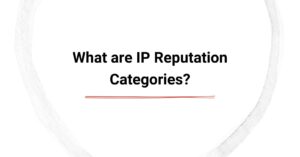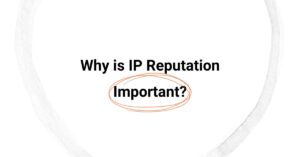Zoho‘s 28th Episode of Expert Diaries focuses on two topics that email marketers around the world have been discussing a lot: Apple MPP (Apple Mail Protection Protection) and BIMI (Brand Indicators For Message Identification).
Their expert of the day was Sarah Connolly, Email Industries’ own Head of Deliverability, who helped the team at Zoho to better understand these elusive topics just like she assists our clients with their deliverability issues every day.
Zoho Team: Apple MPP is a hot topic. Many people believe that the open rate is the best way to gauge someone’s interest in the products and services offered. However, Apple MP renders open rates useless, so clickthrough rates are the only viable option. Is it something that impedes email marketing?
Sarah Connolly: We shouldn’t rely solely on open rates – but it’s the easiest metric. If you have a brand and you’re doing everything right, you’ll be able to rely less on the open rate because people will open your emails if they are interested in your marketing content.
Your customers are doing these things, buying from your company or your firm and sending them content… Once you get better at this, you can reduce the number of metrics you use, especially when they are less reliable and will change.
Marketers who send out emails must take this into consideration and embrace it. There is no other choice.
Zoho Team: Sarah, let’s take a look at a situation. Let’s say I create a workflow and then configure it to move based on the engagement of my contacts with my email. Apple MMP will send the first email and fire open tracking. The email will be marked open, even though the contact may not have read it. The workflow will continue, and the follow-up email will be sent. Let’s say that 40 people click on the CTA to confirm their interest, and they are on a 100-person list. The 60 remaining customers are listed as having opened the email. However, it is difficult to determine if it’s the subscriber opening the email or the system. Please share your thoughts on how to overcome the Apple MPP’s impact on workflows and how to configure workflows moving forward.
Sarah Connolly: It should have a purpose beyond creating and delivering quality content. Start with CTAs, and then consider the end result.
It is important to think about what your ultimate goal is and not just send out content.
You must include a clickable element. This can be used to deliver content or act as an indicator. You can use time- and date-based triggers and then add polls, quizzes, or surveys that allow people to interact with the product or sign up.
These can be used as indicators of success, a way to move your contacts through the workflow, and then you can send the emails out. It is important to remember that sending out emails on a regular basis or daily for the 30-day series of emails is different from sending out seven well-curated emails. It all comes down to being more mindful of the audience to which you are delivering your messages.
Zoho Team: So we need to design and send emails that allow people to interact more with the elements so we can get to know who is really interested in our emails.
Sarah Connolly: This is the way forward. I often see clients coming up with innovative ideas like changing the landscape. I wonder if that’s possible. It all depends on the industry you are in and who your target audience is. Some people have built relationships with their contacts. They even talk to them. You need to be clear about your goals and focus on the right providers, create engaging content and make sure you send emails.
Zoho Team: Sarah, I was wondering what happens when 100 people are manually identified at an event, and they all opt to receive emails from me. Let’s suppose that 90 people use Apple devices to access their emails. All these people may not click the CTA button at first. They might wait until the second or third email to make sure the content matches their preferences and tastes.
We need to contact certain contacts to confirm their interest in opting out or subscribing to our emails. How do we deal with the tricky numbers that show engagement at the first sign?
Sarah Connolly: There’s one thing you can do with an inflated email delivery number. You can see that their emails have been delivered if they are in their inboxes. It all comes back to expectation. What are they expecting of you? You should not use a service to verify that all emails in your workflow have been delivered. Instead, make sure you don’t open any emails.
You may need to be more creative if the issue is specific to one ISP. If that’s the case, consider all of your options. As you go through the time, consider engaging in another way. It doesn’t matter if clickthroughs or other metrics are not taken into consideration at the beginning. However, you should remember that the ultimate goal is to deliver the customer what they expected. If that is not the case, it’s important to look at historical conversion rates to determine how to increase that rate.
Zoho Team: How will this affect the filtering system from the backend? Apple MPP has been enabled and is now available. Mail service providers such as Yahoo and Gmail will be able to feed this data to Apple systems. Or, will there be changes in the filtering system that classifies the emails and places them in the inbox or spam folder or junk folder. This data could be sent to the mail service providers about whether the recipients opened the email.
Sarah Connolly: It’s really fascinating to see the whole concept of deliverability and inbox placement. It is important to know where your emails are going. Is it going to the junk or inbox? The industry is changing, and both the consumer and the recipient have more control over where their mail goes. The filters that are available now are better. The algorithms used to identify what it is are becoming more precise. These recent changes are just one indicator that this content is here to stay. This is why we need to make sure that people are engaged. We also need to look at other metrics to determine contact engagement.
Zoho Team: So, there won’t be any changes in the filtering system?
Sarah Connolly The filtering system will continue to change. It is always changing. The fact that the recipient has greater control over the filtering system makes it clear that changes are occurring daily, not only on the provider’s side but at the subscriber level.
Zoho Team: BIMI examines two aspects of email marketing. One, it protects the sender’s domain and the second is the engagement factor. BIMI is a popular choice today, as it’s not widely practiced. Everyone who sends the brand logo to the inbox is a notable example. It will be a standout example tomorrow, even if many others start to practice it. Or do you think BIMI will undergo some changes? Your thoughts on the future direction of BIMI?
Sarah Connolly: BIMI is just another indicator because out there, a lot of bad stuff is coming in. With SPF, DKIM, DMARC, and BIMI, there will be another acronym in the future. There will be another new indicator that might use all four of these until we come up with some better way to do this.
There needs to be a thing like the internet of standards for email. These things will keep on progressing–they will snowball and evolve because there is just so much malicious activity out there. I hope more people adopt it as it forces people to think about what this is, and there are email service providers who will handle these things for them and make sure all is okay.
I think it is an indicator that everyone should adopt it, and once it’s done, the malicious actors will find ways to work around it. Once it happens, we’ll again create another acronym to combat those problems or mitigate them.
Zoho Team: Before BIMI was introduced, people would open emails and read the subject line and sender name. What is BIMI better than these to convince people to open email?
Sarah Connolly: Any little thing to help people distinguish something from a sea of emails is welcome. So, there’s something that hopefully grabs everyone’s attention over another email. We aren’t talking about bad vs. good but brand vs. brand.
It will it make a difference in reliable open rates? It might, but the point is that you have all the tools and all the nuanced things that can be used to prove that your mail is legitimate, safe, and contains the right content at the right time. It doesn’t replace anything, it’s just another signal. BIMI is a logo. However, it also signifies from a technical perspective, from a safety standpoint, that you have DMARC and SPF.
Zoho Team: Inbox service providers may only show the BIMI logo for bulk senders. This is because they use the email count to classify senders as bulk senders and not individual senders. Does it specify a volume? There are many senders who would like to choose BIMI, but their volume is very low. We need to know what we can suggest for them.
Sarah Connolly: I don’t have an exact number for this; however, I will say that a company should send mail according to the number of subscribers. I mean, don’t force, don’t send more emails so that you get this logo to show. That might lead you to the spam folder.
If you own a small business, you may not need BIMI because you are niche and getting to the inbox. If you are a high-volume sender with all the necessary tools, it might be a different conversation. It might be a problem if you believe there are experts who can analyze the volume of your emails and explain why they aren’t appearing. For most senders, it is best to send the actual message and not care about the logo. You should also consider your other metrics, not just open rates.
Zoho Team: Is only marketing email taken into account? ISPs also consider transactional emails and notifications when it comes down to sending volume.
Sarah Connolly: This should include all types of email, though transactional emails can send positive signals to ISPs. It focuses primarily on the volume of marketing emails you send.
Need help with BIMI or email deliverability?
We have 20 years of experience fixing every sort of deliverability problem, and we’d be happy to help you too. Please schedule a discovery call to receive a custom proposal. 👋









